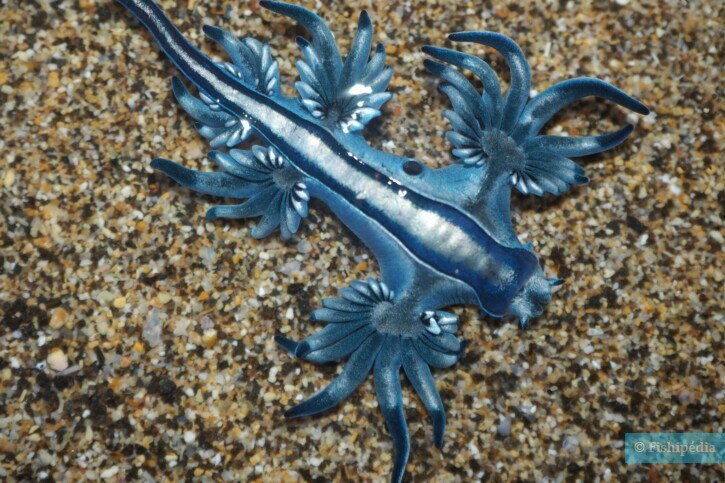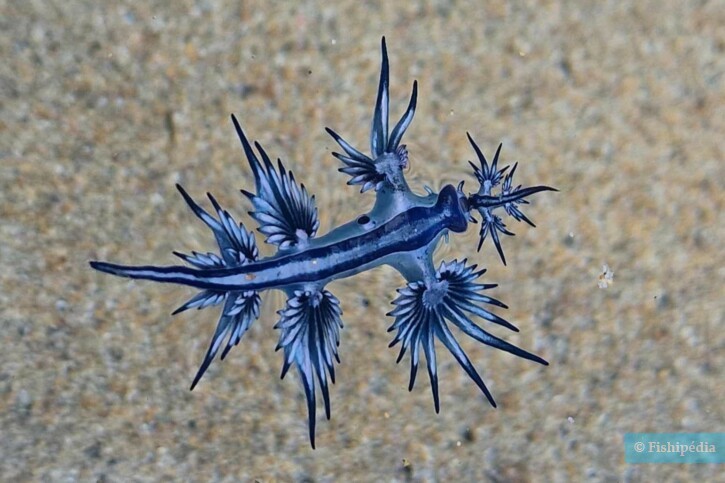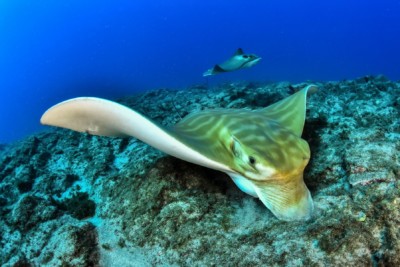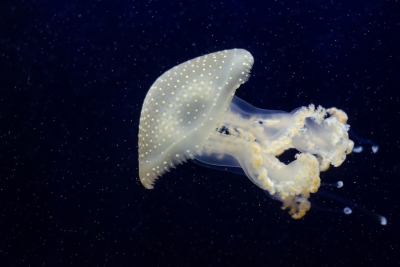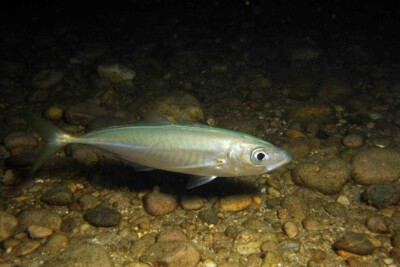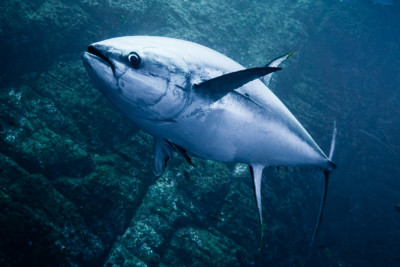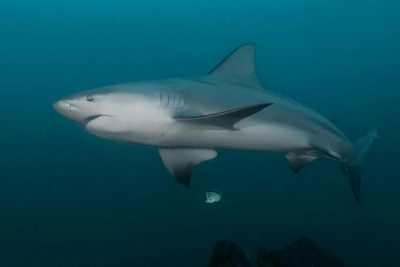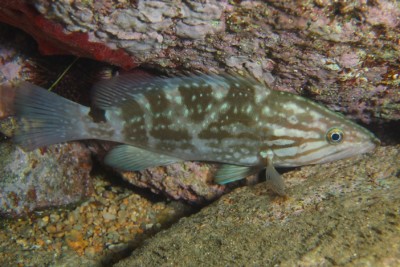blue dragon / blue sea slug
| Scientific name | Glaucus atlanticus |
|---|---|
| Descriptor | Forster |
| Year of description | 1777 |
| IUCN category (World) | NE |
| Family | Glaucidae |
| Genus | Glaucus |
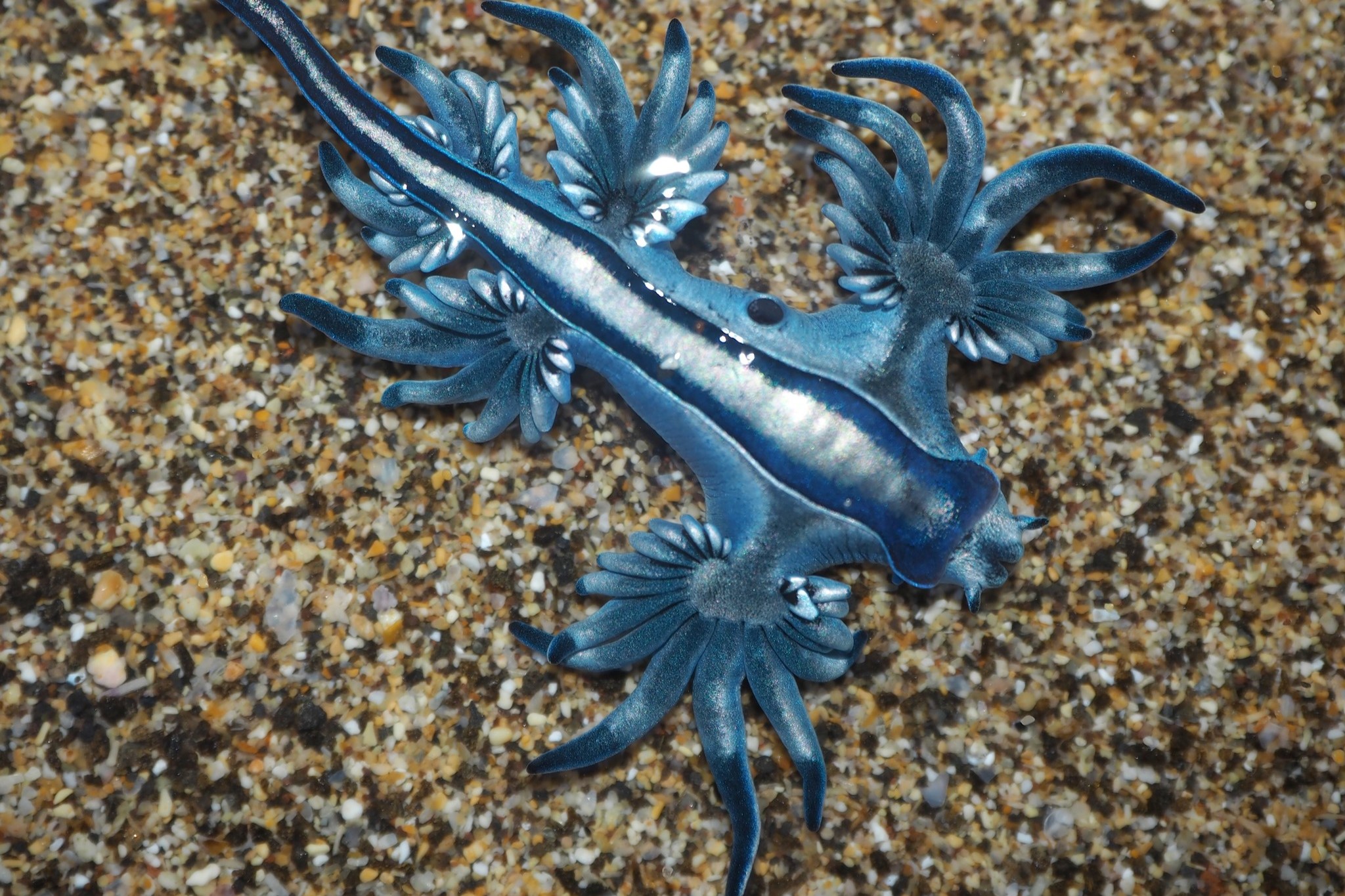

Introduction
Who is it?
Morphology
-
Type
-
Size3 - 4 cm
-
Coloursvivid
-
ChromatophoresNo
-
Motifhorizontal stripes
-
Type
-
Size3 - 4 cm
-
Coloursvivid
-
ChromatophoresNo
-
Motifhorizontal stripes
How to recognize This mollusc ?
The blue dragon has an elongated body that can reach up to 4 cm in length. Its coloration is striking: the underside is striped with horizontal blue and silver-gray lines, with a lighter central band, while the back is gray. The head, located at the front, features a dark blue mouth and two oral appendages. Conical, gray-silver rhinophores are situated dorsally. The body is surrounded laterally by cerata arranged in three pairs.
Behaviour & Life cycle
-
SociabilityThe following information corresponds to the mode of sociability once sexual maturity has been reached.solitary
-
Way of livingdiurnalAn animal is said to be diurnal when it lives during the day.
-
VenomousNo
-
Dietpredator
Glaucus atlanticus is a pelagic species that floats at the ocean's surface, moving in a dorsal orientation. Its buoyancy is maintained by ingesting air, which forms a bubble in its stomach. This nudibranch is relatively passive, drifting in search of food. It primarily preys on hydrozoans, using its jaws and radular teeth to grasp and tear the soft tissues and tentacles of its prey.
Reproduction
-
Reproductionovipare qui pond en eau libre
Risks for humans
-
VenomousNo
The blue dragon possesses stinging cells called cnidocytes contained in cnidosacs at the tips of its cerata. The nematocysts are ingested when feeding on prey, primarily hydrozoans such as Physalia physalis.
These cells make it extremely venomous. Its sting is painful and can cause anaphylactic shock, fainting, or infections.
As a pelagic species floating at the water's surface, the blue dragon may occasionally end up on a beach, carried by winds and tides.
Origin and distribution

Geographic distribution & Conservation
Glaucus atlanticus is found primarily in the tropical and subtropical waters of the Atlantic and Indian Oceans. Its distribution is influenced by ocean currents and seasonal environmental changes. It is commonly observed along the southwestern Atlantic coast, from Brazil to Uruguay, and recent strandings have been reported in the Canary Islands in 2024. The species' occurrence is affected by meteorological events and seasonal shifts in oceanographic conditions.
Conservation status of populations (IUCN)
What is its habitat?
Natural environment characteristics
-
Depth0 - 1 m
Biotope presentation
The blue dragon inhabits the surface waters of the oceans, often found in open pelagic environments above reefs and areas where currents converge. This pelagic species is associated with tropical and subtropical regions, where it drifts at the water's surface. Its biotope is closely related to ocean currents and meteorological conditions, which can cause passive displacement and occasional beach strandings.
Species of the same biotope
Fishkeeping
Not recommended
We do not recommend keeping this species in an aquarium. It has unpredictable needs which, if not met, generate significant stress, potentially leading to a shorter life expectancy, an interruption of its growth or the development of pathogens.
To go further
Sources & Contributions
Participation & Validation
The Fishipedia team and specialist contributors are committed to providing high-quality content. However, although the information comes from scientific sources or testimonials from specialists, the cards may contain inaccuracies.

Adrien Falzon

Benoit Chartrer
Translation
Translation done with the valuable contribution of our translators, who make this information available to a wider audience. We sincerely thank them for their commitment.
Bibliographic references
On the occurrence and ecology of Glaucus atlanticus Forster, 1777 (Mollusca: Nudibranchia) along the Southwestern Atlantic coast - RAPHAEL M. PINOTTI - FABIO C. BOM - ERIK MUXAGATA - Anais da Academia Brasileira de Ciências - 2019.
Scientific partners
Tags
Species of the same biotope
